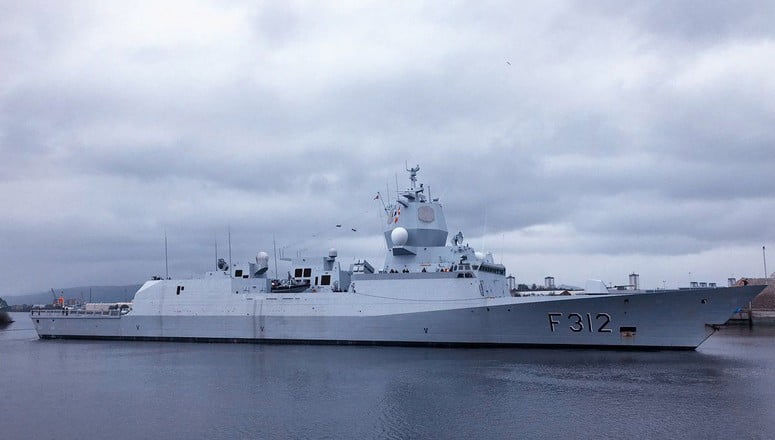The return of the Russians to a position of directly threatening Europe is not a return to the Cold War.
Not only is Russia, not the Soviet Union with the Warsaw Pact, but the threat being posed is considerably different.
Analysts have focused on the hybrid threat whereby Russia uses a variety of means to pressure European states.
The 2014 seizure of Crimea started a significant process of change in how key European states looked at the willingness of Russia to reverse the post-Cold War order.
Even though there are constitutional crises in Britain and in the European Union, the reach of modern European institutions remains significant and impacts on Russian thinking.
Putin certainly has played his nuclear card to ramp up from time to time diplomatic pressure on key European states as well.
And the Russian nuclear modernization process has put in play an expanded threat of the potential use of low yield nuclear weapons early in any significant conflict on the continent as well.
But rather than being on the inner-German border, the Russians face Poland and an independent Eastern Europe as challenges as well.
Here Putin is working relationships among some East European states to work to undermine the EU and NATO as these institutions remain bulwarks to Russian intervention.
The Russian Army is not a new version of the very large Soviet Army organized along lines postured for invasion of a more traditional European sort.
This poses the question for the United States with regard to what kind of force posture makes the most sense to support Europe in its direct defense role?
With Germany without a series defense force, and with the questionable defense infrastructure situation facing the Germany of today, the role of the US Army played in the time of the Cold War in Germany makes little sense.
It would make more sense to strengthen the air-maritime forces which the US provides for European defense, and significantly alter the role envisaged for any US Army role.
Clearly, a primary mission for the US Army is to enhance significantly its ADA or missile defense roles, as well as providing Special Forces and infantry support to these missions.
And linking in a comprehensive manner, land based ADA with sea-based defenses are clearly a key contributor to a 21st century approach to direct defense in Europe.
A current exercise highlights the way ahead.
“Formidable Shield shows how Allies are working together to protect NATO forces and populations from the real threat of ballistic missiles”, said NATO spokesperson Oana Lungescu.
“This is one of the world’s most sophisticated and complex air and missile defence exercises and a great example of how Allies are continuing to adapt to meet current and future security challenges.”
According to a U.S. 6th Fleet Public Affairs release on May 7, 2019:
Exercise Formidable Shield 2019, a live-fire integrated air and missile defense (IAMD) exercise conducted by Naval Striking and Support Forces NATO on behalf of U.S. 6th Fleet, started May 7, 2019 at the U.K. Ministry of Defense’s Hebrides Range in the vicinity of the Western Isles of Scotland.
The purpose of Formidable Shield is to improve allied interoperability in a live-fire integrated air and missile (IAMD) environment, using NATO command and control reporting structures.
Nine nations – including Canada, Denmark, France, Italy, the Netherlands, Norway, Spain, the United Kingdom, and the United States – are contributing 13 ships, more than 10 aircraft, and approximately 3,300 personnel to the exercise. Belgium and Germany will support the exercise with staff officers embarked with Task Group IAMD.
“Exercise Formidable Shield demonstrates the United States and our allied maritime partners high end war fighting capability in integrated air and missile defense. This significant investment of resources, time, and personnel ensures we are ready to deploy and operate anywhere, anytime, to defend the alliance and deter aggression,” said Vice Adm. Lisa M. Franchetti, Commander, U.S. 6th Fleet and Commander, Naval Striking and Support Forces NATO. “These maritime operations provide a tremendous opportunity to enhance our interoperability and test our capabilities as we collectively work to maintain a safe, secure, and prosperous European region.”
Participating nations will practice, demonstrate, and assess their ability to share common tactical pictures, share situational awareness, conduct NATO-level mission planning and engagement coordination, and exercise force-level, pre-planned responses with capabilities and limitations.
“Exercise Formidable Shield 2019 will once again help us refine our air and missile defense capabilities with our partners and allies by training together and demonstrating our ability to ensure the cooperative security and collective defense of the NATO Alliance,” said Capt. Shanti Sethi, commander, Task Group IAMD for Formidable Shield, and commander, U.S. 6th Fleet’s Task Force 64.
U.S. ships participating include the Arleigh Burke-class guided-missile destroyer USS Carney (DDG 64) and USS Roosevelt (DDG 80) and the Lewis and Clark-class dry cargo ship, USNS Medgar Evers (T-AKE 13).
“The Roosevelt crew is so excited about participating in Exercise Formidable Shield 2019,” said the ship’s Commanding Officer, Cmdr. Matthew Molmer. “It will allow us to showcase the training we’ve had to date and work closely with our NATO partners.”
Formidable Shield is scheduled to conclude May 19, 2019. This exercise is planned to be a recurring, biennial event, which is designed to assure allies, deter adversaries, and demonstrate our commitment to collective defense of the alliance.
Naval Striking and Support Forces NATO, based in Lisbon, Portugal, is a rapidly deployable, maritime headquarters that provides scalable command and control across the full spectrum of warfare areas.
U.S. 6th Fleet, headquartered in Naples, Italy, conducts the full spectrum of joint and naval operations, often in concert with joint, allied and interagency partners, to advance U.S. national interests and security and stability in Europe and Africa.

A NATO press release dated May 8, 2019, added:
The exercise will see Allied ships detecting, tracking and defending against an array of anti-ship and ballistic missiles using NATO command and control procedures. Drills will include sharing real time tactical information, conducting joint mission planning, and engagement coordination.
Canada, Denmark, France, Italy, the Netherlands, Norway, Spain, the United Kingdom, and the United States will participate by sending ships and aircraft. Belgium and Germany will support the exercise with staff officers.
A total of 13 ships, 10 aircraft, and about 3,300 personnel are involved. Maritime patrol aircraft and NATO AWACS surveillance aircraft will provide aerial over-watch and ensure that the airspace is clear. Formidable Shield will cover a huge area in the North Atlantic – from more than 1,000 km west of the Scottish Hebrides, and from the south of Ireland to the southern end of Iceland.
The exercise follows NATO’s decision in 2010 to step up the defence of European Allies from ballistic missile threats. NATO missile defence links Allied sensors and weapons together in a single system. Major components of NATO missile defence currently include U.S. Navy destroyers fitted with the ‘Aegis’ missile defence system based in Rota, Spain; and a U.S.-operated land-based system in Romania known as Aegis Ashore. Other major components include an early warning radar in Turkey. NATO’s air command in Ramstein, Germany is the responsible command.
See the following:
the-us-and-european-direct-defense-what-role-for-the-us-army
Poles Enhance Integrated Defense: Laying Foundation for Enhanced Allied Crisis Support
Poland, Article III and Missile Defense: Shaping a Way Ahead in Alliance Capabilities


